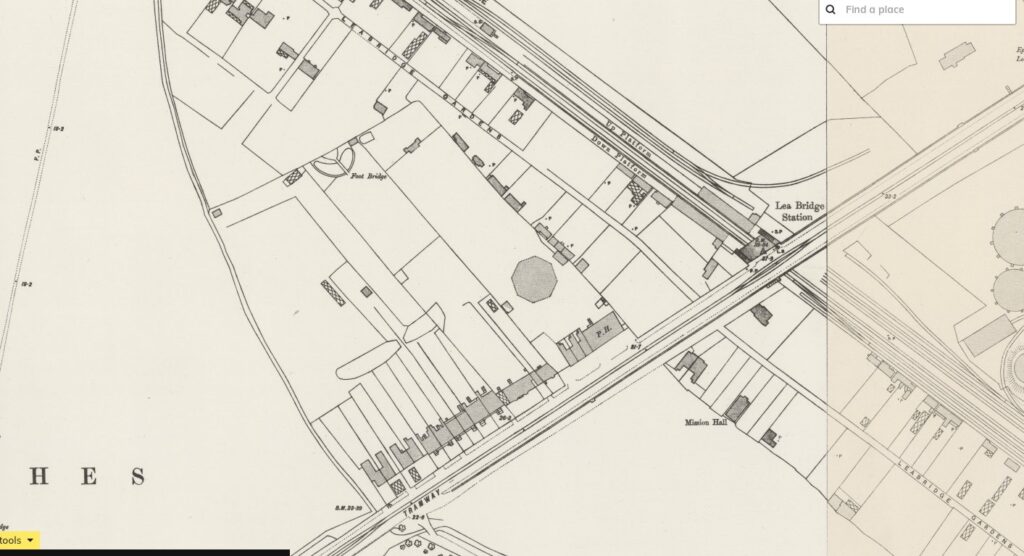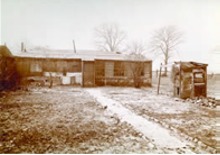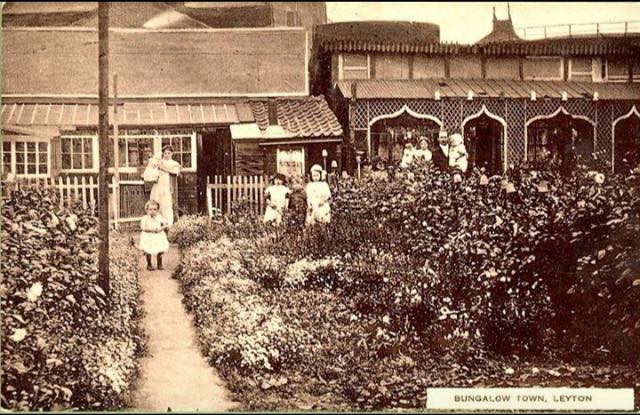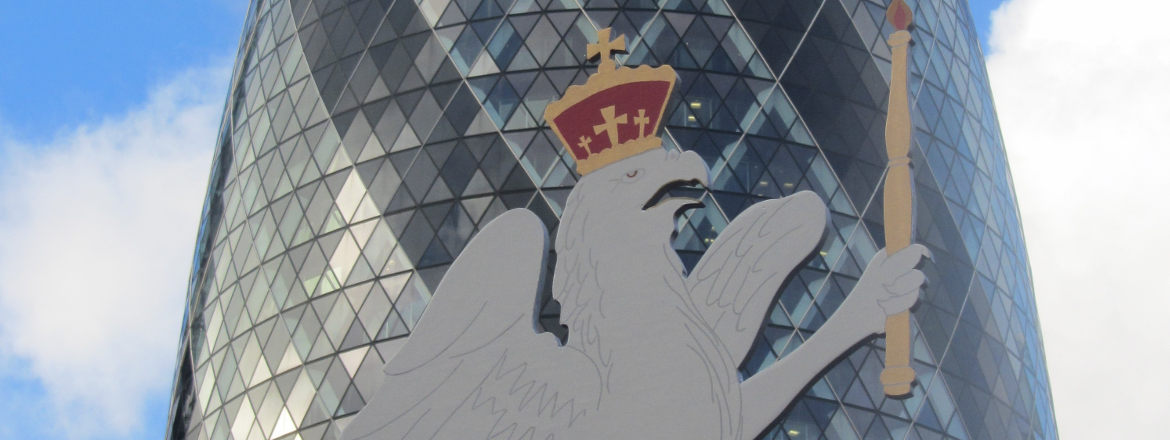It vanished piecemeal nearly a hundred years ago. The “dwellings” were considered a health hazard by the 1930s. But before the days of building controls, a haphazard development of up to a hundred homes had grown up – Lea Bridge Gardens. Or the Bungalow Town. These were the unofficial homes of the poor.
And because it was all very unofficial there are few surviving records of who came here first, probably not long after Lea Bridge Station opened in 1840, bringing with it some of the earliest housing for commuters in the area. It also brought a direct route from the terminus at the new Shoreditch – later renamed Bishopsgate – Station. For many years this had been an area where newly arrived Londoners settled, often moving on either when they became prosperous or when their attempt at a new life failed. In the 1850s and 60s the silk industry in the area, and many of its workers, often immigrants, moved away to seek new employment. One suggestion is that some of them became the first residents of Lea Bridge Gardens, some of them finding work in the textile, and in particular fabric and yarn dyeing, trade in the area.

Whatever made the new residents choose that particular spot, the first houses were of the most basic variety. The Rev’d Morgan Gilbert, then a young curate from Leyton became a regular visitor in the 1880s, and remembered dwellings built round living trees, incorporating the roots and branches as storage for possessions, roofs made of whatever came to hand and trodden earth floors. Morgan certainly believed that the first residents were Spitalfields weavers who “had been driven out of their East End refuges”. Fresh water was available from wells, but the only sanitation was earth closets. There was no heating and none of the dwellings had a proper kitchen. In later years a custom built wooden mission church and school room were set up. But the road was still a dirt one, reached by going under an archway which, for many years, was the only shelter of an elderly hawker and his donkey.

Each dwelling was built of a plot big enough to provide a long garden, and some of the residents made a living by raising vegetables and flowers; some also kept hens and sold surplus eggs. On summer Sundays the children took baskets of flowers up to the Lea Bridge Road and sold them to day trippers on their way to Epping Forest. Morgan remembered children “holding out small bunches and buttonholes, running along by the carts and vehicles of any description, begging for pence in return for a lovely bunch of sweet scented buttonholes or sprays for the ladies”. He remembered, too, that the parish rented one of the cottages as a mission room in those early years, and that they paid for teacher and for books so that the children had at least a basic education.
By the end of the nineteenth century Lea Bridge Gardens was an established community; a photograph shows neat-looking bungalows and well tended gardens. The residents seem to have been a mixed group, still including market gardeners, but also people of a variety of occupations, including a musician, a printer or two and, for a few years, a retired ivory carver from Houndsditch, Richard Kingsman, who had fallen on hard times and had to move in with his son, came into a legacy and so was able to buy a bungalow and, in his eighties, live independently for his last few years. Another suggestion about those years is that tradesmen from Hoxton bought up some of the plots to provide a summer weekend retreat for their families. At least some of the residents were there because that was where they wanted to be and that was how they wanted to live.

But times changed, and brought with them building controls, medical officer of health reports highlighting the rates of infectious diseases and higher standards of sanitation. In the years after the First World War and, after it, the horrors of Spanish Flu, the authorities began to take an interest in Lea Bridge Gardens. Rather than any draconian attempt at mass eviction, as each bungalow became vacant it was closed down and demolished. By the early 1930s all had vanished, and today no visible trace remains.

2 pings